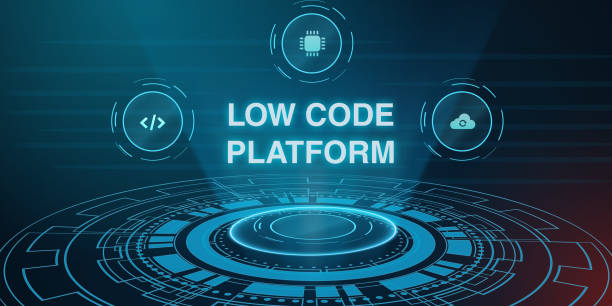A well-designed POS application development system can offer businesses a wide range of benefits, from streamlined sales and inventory management to improved customer experience and increased revenue. Customizable POS systems can be tailored to meet the unique needs of any business, making them a powerful tool for growth and success. In our blog, you’ll discover how a well-designed POS application development system can revolutionize your business operations.

What is a POS Application Development System
A POS (Point of Sale) application development system is a software framework that allows developers to create custom point-of-sale software solutions. POS applications are used by businesses to manage sales transactions, track inventory, and generate reports.
A POS application development system typically includes tools and APIs (Application Programming Interfaces) that enable developers to create customized solutions for different types of businesses. These tools may include functions to process payments, manage inventory, generate reports, and integrate with other software systems.
Developers can use the POS application development system to create software solutions for various businesses, including retail stores, restaurants, hotels, and other service-oriented businesses. A POS application development system allows businesses to customize their point-of-sale software to meet their specific needs and streamline their sales processes.
Types of POS Development Systems
There are different types of POS (Point of Sale) development systems, each with its own features and capabilities. Some of the common types of POS development systems are:
1. Desktop POS
A desktop POS system is a traditional type of POS system installed on a computer and typically used by small to medium-sized businesses. It offers a reliable and secure way of processing transactions and managing inventory. It usually includes hardware components such as a cash drawer, a barcode scanner, and a receipt printer.
2. Mobile POS
A mobile POS system is a type of POS system that runs on mobile devices such as tablets or smartphones. It is ideal for businesses that require a flexible and mobile POS system, such as food trucks or pop-up stores. It offers the convenience of accepting payments on-the-go, and can also offer features like inventory management and customer data tracking.
3. Cloud-based POS
A cloud-based POS system is a type of POS system that is hosted on a remote server and accessed over the internet. It allows businesses to manage sales and inventory data from anywhere and at any time. It offers low upfront costs, scalability, and flexibility and can also offer features like automated updates and data backups.
4. Self-service POS
A self-service POS system allows customers to place their own orders and pay for their purchases without the need for a cashier or a server. It can provide businesses with cost savings and increase efficiency and offer features like customization options and upselling prompts.
5. Industry-specific POS
An industry-specific POS system is designed for specific industries, such as restaurants, retail stores, or hotels. It often comes with industry-specific features and integrations, such as table management, menu customization for restaurants, inventory tracking, and purchase orders for retail stores. It offers businesses a tailored solution that meets their unique needs and requirements.
Key Components of a POS System
A POS (Point of Sale) system typically consists of the following key components:
Hardware: The hardware component of a POS system includes a computer or tablet, cash drawer, barcode scanner, receipt printer, and card reader or payment terminal.
Software: The software component of a POS system includes the application that runs on the hardware and manages sales transactions, inventory, and customer data.
Payment processing: Payment processing is an essential component of a POS system. It includes a card reader or payment terminal to process credit and debit card payments.
Inventory management: It is an important part of a POS system, which helps businesses keep track of their inventory levels, track sales, and reorder products when necessary.
Sales reporting: A POS system also provides businesses with sales reporting tools that enable them to track sales, monitor trends, and generate reports.
Customer relationship management (CRM): A POS system can help businesses manage customer data, track purchases, and create loyalty programs to improve customer engagement and retention.
Security: A POS system must also have robust security features, including data encryption, user authentication, and compliance with industry regulations to protect customer data and payment information.
What Are The Benefits Of A Point Of Sale System
A Point of Sale (POS) system offers several benefits for businesses, including:
Improved Efficiency: A POS system automates several time-consuming manual processes, such as inventory management, sales tracking, and customer data management, allowing businesses to operate more efficiently.
Accurate Sales Tracking: A POS system accurately tracks sales data, including the number of products sold, total revenue generated, and customer purchase history, which can help businesses make informed decisions and improve their sales strategies.
Reduced Errors: POS systems minimize the risk of errors in sales transactions, such as pricing mistakes, incorrect product information, and miscalculations, which can save businesses money and prevent customer dissatisfaction.
Better Inventory Management: A POS system helps businesses manage their inventory levels more effectively, enabling them to track stock levels, reorder products when necessary, and prevent stock shortages and overstocking.
Streamlined Payment Processing: A POS system provides businesses with a streamlined payment processing system, allowing them to accept multiple payment types, such as credit and debit cards, mobile payments, and electronic wallets.
Improved Customer Relationship Management (CRM): A POS system can help businesses improve customer relationships by providing them with customer data and sales history, enabling them to create targeted marketing campaigns, loyalty programs, and personalized offers.
Enhanced Security: A POS system provides businesses with robust security features, such as data encryption, user authentication, and compliance with industry regulations, ensuring that customer data and payment information remain safe and secure.
Conclusion
In conclusion, a Point of Sale (POS) system is a powerful tool that can help businesses operate more efficiently, reduce errors, and manage inventory levels more effectively. A POS system enables businesses to improve their sales strategies and boost customer engagement and retention with accurate sales tracking, streamlined payment processing, and enhanced customer relationship management. Additionally, robust security features ensure that customer data and payment information remain safe and secure, which is essential in today’s digital age. Overall, a POS system can benefit businesses, allowing them to focus on their core operations and grow their business.
Looking for a reliable POS system for your business? SPEEDFORCE DIGITAL offers a range of solutions to meet your needs, from desktop to mobile systems. Contact us today to learn more.
Frequently Ask Questions
1. What is a POS system, and how does it work?
A POS system is a software solution that manages sales transactions, inventory, and customer data. It typically includes hardware components, such as a computer, cash drawer, and receipt printer, and software that runs on the hardware. The system records sales manage inventory levels, and provide businesses with data and reports to help them make informed decisions.
2. What type of hardware do I need for a POS system?
The hardware needed for a POS system includes a computer or tablet, cash drawer, barcode scanner, receipt printer, and card reader or payment terminal. However, the specific hardware requirements can vary based on the POS system type and your business needs.
3. How secure are POS systems?
Security is critical for POS systems, as they handle sensitive customer data and payment information. Look for a POS system that offers robust security features, such as data encryption, user authentication, and compliance with industry regulations, to ensure that your data remains safe and secure.

